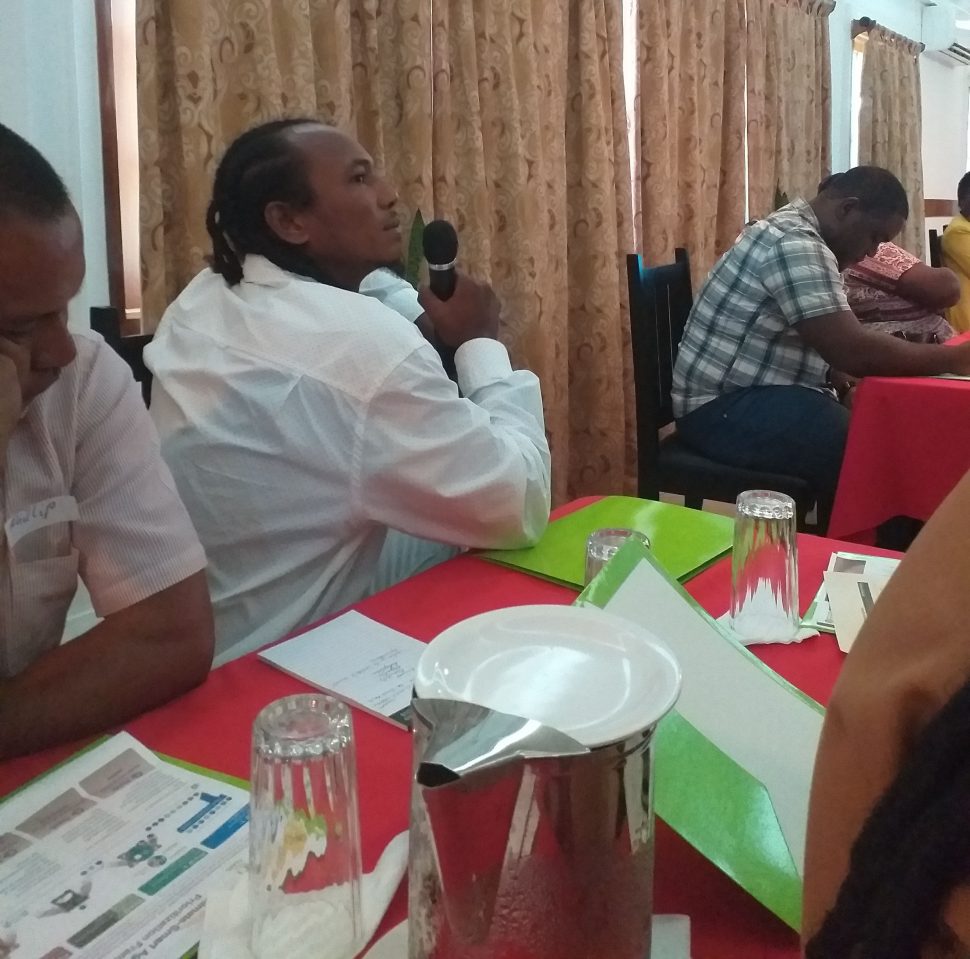Government has embarked on climate smart agricultural practices to assist farmers in dealing with the effects of climate change.
According to a National Agricultural Research and Extension Institute (NAREI) press release, several farmers operating in Regions Nine and Three on Wednesday participated in a workshop focussed on ‘Prioritizing Climate Smart Agriculture Practices and Technologies in Guyana’. Experts and other attendees included NAREI’s CEO, Dr Oudho Homenauth; Permanent Secretary of the Ministry of Agriculture, Delma Nedd; and Country Representative of Inter-American Institute for Cooperation on Agriculture, Wilmot Garnett. The event was held at the Grand Coastal Inn, East Coast Demerara.
The workshop is a component of a project titled ‘Development of an Evidence-Based, Gender Equitable Framework for Climate Smart Agriculture Interventions, which is grant-funded by the Caribbean Development Bank and the Government of Guyana. The implementing partners are the Ministry of Agriculture, University of Guyana and International Centre for Tropical Agriculture (CIAT).
Delivering the opening remarks, Dr Homenauth explained that this is the first time that a scientific approach has been taken to model crops in Guyana with Regions Three and Nine selected as the pilot regions. Data obtained from this workshop would assist in the crafting of a framework that would guide the modelling in the regions. The crops that were identified for the project are cassava, plantain, coconut, sweet potatoes, pineapple and rice.
Dr Homenauth emphasised the relevance of this crop modelling project to Guyana’s pursuit of a green economy, which builds on the experiences and lessons of the Low Carbon Development Strategy. This initiative would assist Guyana to develop a more inclusive and comprehensive path to a low emission, low deforestation and climate resilient development plan.
An example was given of Ben Smith, a farmer having to deal with climate change issues. He has two acres of land under cultivation with cabbage, plantain, banana and cassava situated at Moco Moco Settlement, Region Nine – an area that has been susceptible to El Niño and La Niña conditions within recent years.
Smith, like many farmers, is familiar with the term ‘climate change,’ the phenomenon responsible for the unfavourable climatic conditions. Extended dry periods have caused him to move crops, particularly cassava, closer to the creek while the wet periods bring pest and diseases.
Permanent Secretary Nedd in her remarks said “It must be noted that with 90 per cent of the population and 75 per cent of the main economic activities concentrated on the low-lying coast, Guyana is particularly vulnerable to negative effects of climate change on its economy, human livelihoods and ecosystems”.





